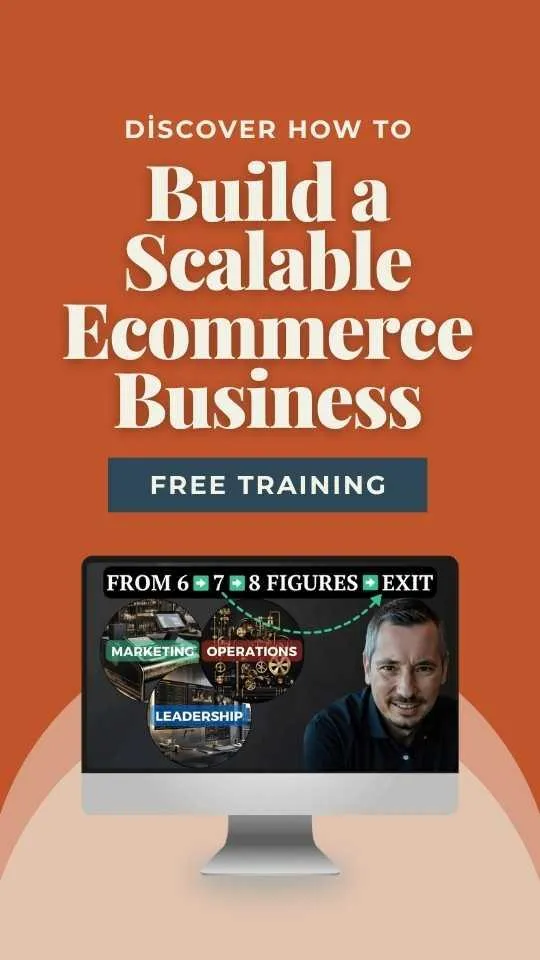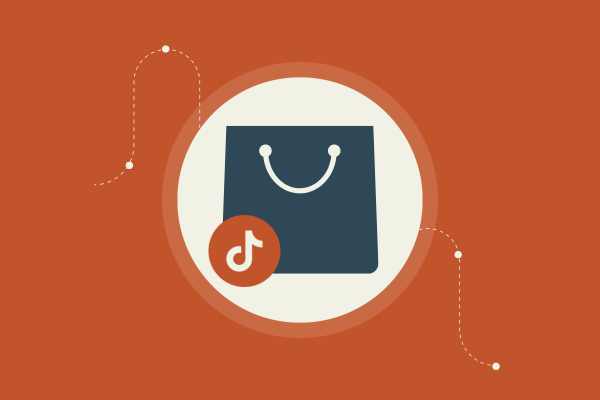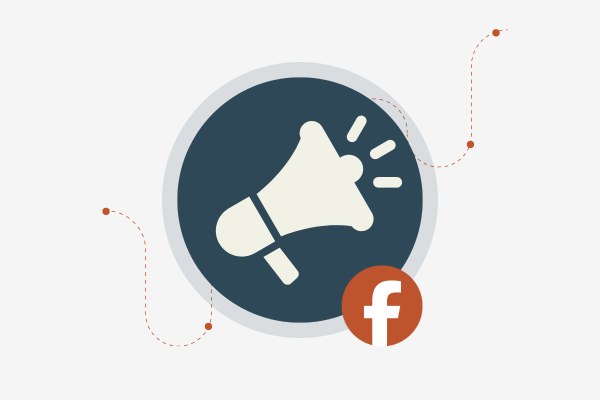Understanding Return on Capital Employed: Boost Your eCommerce Profits
Return on Capital Employed (ROCE) is like a secret weapon for eCommerce entrepreneurs. It's all about figuring out how much profit you generate from the money invested in your business.
When you know your ROCE, you can see how efficiently your business is using its resources. This is key because it helps you spot areas where you can improve and boost profitability.
You want to make sure every dollar you invest pulls its weight. Understanding ROCE isn't just a boring accounting term; it’s your ticket to making smarter business decisions. It tells you if your capital is working hard enough or if you need to rethink your strategy to get the best bang for your buck.
Dive into this guide and you'll get a grip on ROCE to truly understand your financial health. You'll learn how to calculate it and leverage it to supercharge your business growth. Stay with us, and transform your approach to running an eCommerce store.
Key Takeaways
Know your ROCE to understand your business efficiency.
Use ROCE insights to make informed financial decisions.
Improve ROCE for better profitability.
Decoding ROCE
Getting the lowdown on Return on Capital Employed (ROCE) is a game changer for eCommerce entrepreneurs. It lets you measure how well you're turning investment into profit. Dive deep into what ROCE is all about, why it stands out among other ratios, and why it matters for your business.
What Is ROCE?
ROCE stands for Return on Capital Employed. It's a way to figure out how efficiently your business uses its capital to produce profits.
You calculate it by dividing your Earnings Before Interest and Taxes (EBIT) by the capital employed, which is the total assets minus current liabilities. Think of it like a report card for your money.
A higher ROCE means the business is using its money wisely. It's not just about making money; it’s about making money efficiently. You want your ROCE to consistently beat industry standards. That’s how you know you’re winning.
ROCE vs. Other Profitability Ratios
ROCE isn't the lone wolf in the world of profitability ratios. You’ve got other players like Return on Equity (ROE) and Return on Assets (ROA).
ROE looks at profits as a percentage of shareholders’ equity. ROA shows profits as a percentage of total assets. ROCE, on the other hand, includes all capital used, both debt and equity. This makes it a more comprehensive measurement.
By using ROCE, you get a full view of how all the invested money is working for you, not just part of it. It’s all about seeing the bigger picture.
Importance of ROCE in eCommerce
In eCommerce, ROCE can be your secret weapon. It shows if you’re squeezing every bit of profit from what you’ve got.
You invest in tons of things: inventory, tech, marketing. ROCE tells you if those investments are actually paying off. It lets you compare your business to others in the eCommerce space. A high ROCE means you’re doing something right.
Keep an eye on this metric. It helps you spot weak spots and potential growth areas. Knowing your ROCE keeps you sharp and ready to make smarter financial moves.
The Anatomy of ROCE
Want to know how well your business is using its resources? Return on Capital Employed (ROCE) is your go-to metric. It gives you insights into how effectively you’re converting your capital into profit. Let's break it down so you understand every bit of it.
Breaking Down the Formula
ROCE is like that magic formula to gauge your company’s performance. Here’s the formula: ROCE = EBIT / Capital Employed.
Simple, right? Earnings before interest and tax (EBIT) over what’s been thrown into the pot (capital employed). This ratio helps you see how efficient your business is at generating profits from the capital in use. Think of it like measuring how much bang you’re getting for your buck.
A higher ROCE means better utilization of your capital. This is especially important for making investment decisions and understanding growth prospects.
Components of Capital Employed
Let's talk capital employed. Imagine it as the total money in play within your business. It includes both debt and shareholders’ equity. Think of capital employed as everything you’ve got riding on your business.
You’ve got to look at the big picture, right? By including debt and equity, you see how much of the company’s funds are actively working to generate profit. You want this to be as productive as possible. If you’re not using your capital effectively, then your money isn’t doing the work it should.
Understanding what makes up your capital employed helps you better strategize. Allocating resources wisely is key.
Understanding EBIT
Earnings Before Interest and Tax (EBIT) is another crucial piece of the puzzle. It’s all about the profit your company makes from its operations. No interest, no taxes, just pure operational gains.
EBIT tells you how your core business activities are performing.
For eCommerce entrepreneurs, EBIT is a clean lens. It shows you how well you’re managing revenues versus day-to-day expenses before any other financial obligations muddy the waters.
By looking at EBIT, you get to see the true power of your business’s operational side. It strips out all the noise, allowing you to focus on what you can control—operational efficiency.
Calculating ROCE
Want to know how well your eCommerce business is using its capital to generate profit? ROCE tells you. Calculate it with capital employed and EBIT for clear insights. But watch out for some common calculation mistakes.
Step-by-Step ROCE Calculation
Calculating ROCE is straightforward. The formula is simple: ROCE = EBIT / Capital Employed.
Start with your EBIT, or Earnings Before Interest and Taxes. This number shows how much profit your business makes just from operations, without any debt influence.
Next, figure out your capital employed. This is your total assets minus current liabilities. Basically, it's the money being used in the business.
Divide the EBIT by the capital employed. Multiply that result by 100 to get a percentage. This percentage tells you how efficiently your capital is producing profits.
Remember to double-check your numbers because little mistakes can mess up the whole calculation.
Common Pitfalls in ROCE Calculation
Wrong calculations can give you a skewed view. First, ensure your EBIT doesn't include non-operating income. Including it will paint an inaccurate picture of operational efficiency.
Another common mistake is miscalculating capital employed. It must reflect only the true operational assets minus current liabilities.
If you are inconsistent with your figures, you might compare different periods incorrectly. Be consistent—compare apples to apples.
Sometimes people compare ROCE across industries blindly. But, different industries use capital differently. So, make sure the context fits.
Avoid these pitfalls to ensure your ROCE calculations are reliable and useful in decision-making.
Leveraging ROCE for Business Decisions
You're in the eCommerce game, and understanding ROCE can be a game-changer. It helps you figure out how efficiently you’re using your money to boost profits. Dive in to see how ROCE can guide your investment moves, streamline operations, and shape your financial plans.
Investment Decisions and ROCE
ROCE is your friend when deciding where to put your money. It shows how much profit each dollar of capital investment brings in.
Say you’re thinking about new tech or a fresh market. Check the ROCE first.
High ROCE? Go for it. Low? Maybe think again. Analyze the potential return before committing cash.
Spot areas where your capital is working hard or slacking off. This gives you a clear view of whether to pump money into a project or pull back.
Use insights from ROCE to prioritize projects that promise the most bang for your buck.
ROCE in Operational Efficiency
Staying lean and mean in operations is crucial. ROCE helps you see efficiency by tracking how well you’re using assets. Look at what’s boosting profits and what’s not.
For instance, identify non-core activities draining resources. Streamline or cut them to improve ROCE.
It's like finding treasure—more profit, less waste.
Use ROCE to see if those fancy software systems or extra inventory are really worth it.
Focus your efforts on operations that drive profits, freeing up the capital tied in unproductive processes.
ROCE and Financial Planning
Smart financial planning needs ROCE in the mix. It paints a picture of financial performance to guide long-term strategies. Measure against industry norms to see where you stand.
Higher than average ROCE means you’re doing something right, but don’t get complacent. Keep evaluating risks and returns.
Financial planning with ROCE helps predict future cash flows, making sure you're putting money where it matters.
Plan your finances with an eye on ROCE to ensure your business stays on track and profitable, even as the market shifts.
ROCE in Practice
Understanding ROCE is more than just theory. It's about seeing it in action and knowing how to use it to outsmart your competition. We'll look at real-world examples of businesses that have nailed it and compare how your numbers stack up against others in the industry.
Case Studies: Successful ROCE Implementation
Let's talk winning moves. Picture a company that invested smartly in technology to boost efficiency, not just sales. They didn’t just pump money into shiny gadgets; they optimized their supply chain. This reduced costs and increased available cash, which pushed their ROCE up.
Another example is a brand that focused on customer loyalty, cutting down on customer acquisition costs. By leveraging existing customers, they improved profit margins without hefty investments.
This strategic use of resources helped improve their ROCE significantly. These companies used capital wisely, and their stories can inspire your entrepreneurial journey.
Benchmarking Against Industry Peers
You've got your ROCE calculated. Now what? It's time to see how you measure up. Industry benchmarking is key. It gives you the chance to see if your investment strategies are hitting the mark or if you need a new play.
Check out industry averages and compare your numbers. If your ROCE is lagging, it might be time to rethink your capital investments.
It's not about comparing apples to oranges; it's about finding your place in the pecking order. By benchmarking, you can find out where you're a front-runner and where there's room for improvement.
Improving Your ROCE
Boosting your Return on Capital Employed (ROCE) means working smarter with your money. You’ll need to strike a balance between using debt wisely and managing how you use your capital. Let's dive into the specifics.
Strategies for Upping Your ROCE Game
First thing: tighten up your expenses. Track down unnecessary costs—like spending on underperforming ads or overpriced suppliers—and cut them out. Every dollar saved is a dollar earned. It’s basic, but super effective.
Next, amp up your sales without spending big. Tap into your current customer base. Sell them more or offer complementary products.
You won't have to spend as much to bring in new leads. Plus, happy customers buy more.
Finally, optimize your working capital. Keep your inventory lean, but stocked. Ensure you have just enough to meet demand without overspending on storage. Get those invoices paid faster too. Cash flow is king.
Balancing Act: Debt and Equity
Debt isn’t all bad. It’s a tool. Used correctly, it can supercharge your business. Too much can be risky, though. Keep it in check.
Low interest rates? Cool, that’s your moment to shine. Use debt to leverage opportunities.
Equity is your other half in this dance. Giving away equity can fund big moves without adding debt. Find the right balance.
Debt too high? Consider bringing in investors. Equity gives you room to breathe.
Your capital structure needs both. Some debt, some equity. It’s like a pizza. Too much sauce (debt), and it’s soggy. Too much cheese (equity), and it’s overwhelming. Find that perfect blend, and your business can thrive.
The Big Picture
In eCommerce, Return on Capital Employed (ROCE) isn't just a number. It's a snapshot of your ability to grow and sustain your business. Focusing on this metric can show you where your hard-earned money is going and how you can use it better.
ROCE and Company Growth Potential
ROCE gives you a peek into your growth engine. It's all about seeing how well you're using your money to make more money.
High ROCE might mean things are looking up. Your company has the fuel it needs to expand.
You want to compare your ROCE with industry averages. Look at your competitors and see if you're keeping up or leaving them in the dust.
A higher ROCE often points to better management and market conditions working for you.
Keep your eyes on revenue growth. Are you getting more returns on the same amount of capital? That’s a sign you're hustling smartly.
Watch out for changes in market conditions and adjust your strategy. Keep your ROCE in the sweet spot for maximized growth.
Sustainability and ROCE
Sustainability is about keeping what you've got and making it better. ROCE tells you if that's happening or not.
If your returns are consistent, you're on a solid path.
A drop in ROCE could mean you're spreading yourself too thin or your investments aren't paying off. Reassess where you're putting your capital.
Maybe it's time for a pivot or to double down on what's working.
Keep an eye on your resources. Efficient use of capital leads to a more sustainable business. You're not just surviving; you're thriving.
Sustainable practices often lead to better ROCE, aligning your growth with responsible business.
Evaluate your eCommerce strategy. Look at ROCE’s role in your long-term game plan. Rock your numbers and bring in ROCE mastery. It's your tool for both today and tomorrow's success.
ROCE Reflections
Good old ROCE! It's like a spotlight on how well your eCommerce biz is using its capital. We'll talk about when it shines bright and when it falls short.
ROCE Real Talk: The Good, the Bad, and the Ugly
Let’s be real. ROCE is a powerful metric.
A good ROCE means you're squeezing the most juice out of your capital. It shows efficiency in turning investments into profits. Keep your ROCE high, and investors are likely to smile. They'll see your business as a well-oiled machine.
On the flip side, a low ROCE can be a red flag in the financial statements. It might mean you're underusing your capital. This is a sign that you might need to shake things up. Maybe trim the fat or find new ways to stir growth.
Monitoring ROCE isn’t a one-time thing. It’s a continuous duty. Regular checks ensure you stay on track. It's not just about the numbers; it's about maintaining the pulse of your business performance.
Keep an eye on that ROCE. It doesn’t lie about what’s good, bad, or downright ugly.







